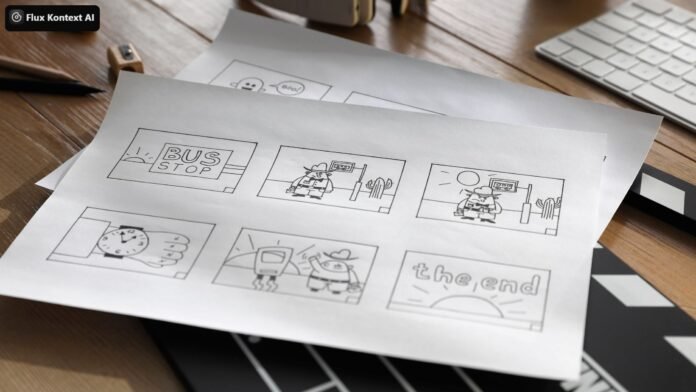The Missing Piece: How Kontext AI Solved a Creator’s Biggest Problem in Generative Art
In the booming world of generative AI, creators have been handed a powerful but often inconsistent toolkit. While text-to-image models can conjure breathtaking visuals, they struggle with a fundamental creative need: continuity. A character’s face might change between frames, a brand logo could warp, or a style could be lost in a minor edit. This persistent problem of “context” was the void that Kontext AI was built to fill. This is the story of a pioneering startup that isn’t just generating images—it’s building a new, more intelligent foundation for visual storytelling and design.
The founder(s) of Kontext AI saw beyond the hype of simple image generation and recognized a deeper, more profound pain point for artists, marketers, and developers. Their core insight was that true creative freedom doesn’t come from endless randomness; it comes from control and consistency. The team, with deep roots in AI research, was motivated by a single, powerful question: What if an AI could “remember” and understand an image as a whole, not just as a set of pixels? This led to the development of a revolutionary platform that accepts both text and images as input, enabling a new level of “in-context” generation and editing.
The most compelling aspect of Kontext AI is its unique technology, which provides a trio of game-changing features: Character Consistency, Local Editing Precision, and Style Reference. These aren’t just features; they are a direct answer to the frustrations of a generation of creators. By preserving character identities across scenes, allowing for surgical-like precision in edits, and enabling seamless style transfer, Kontext AI transforms a chaotic, iterative process into a fluid, professional workflow. The company’s models, including the powerful Flux Kontext Pro and Flux Kontext Max, are not just about raw output quality, but about the intelligent, consistent application of that quality.
The journey of building this platform was a significant technical challenge. It required moving beyond standard AI models that generate images from scratch and developing a proprietary system that could analyze and retain visual context. The team had to engineer a solution that could handle the complexity of understanding an image as an input, a task far more difficult than it sounds. They also had to create a user-friendly interface that could translate this complex technology into a simple, prompt-based experience. The result is a credit-based system that allows creators to choose the level of performance they need for their specific tasks, from fast, iterative editing to complex, high-fidelity generations.
Kontext AI’s philosophy is that AI should be a partner in the creative process, not just a tool for random generation. The platform is built for professionals who need to maintain a cohesive visual identity, whether they’re creating a comic book, a series of marketing ads, or a unified brand aesthetic. By empowering creators with precise, context-aware controls, the company is fundamentally changing the way creative teams work. It’s a testament to the idea that a truly disruptive innovation isn’t always a new-to-the-world concept, but a solution that elegantly addresses a long-standing, unsolved problem.
For aspiring entrepreneurs and innovators in the generative AI space, the Kontext AI story offers several key lessons:
- Identify and Solve a Specific Pain Point: Instead of creating another generic image generator, the founder(s) focused on a well-defined and frustrating problem: contextual consistency. This focus created a powerful and differentiated product.
- Build a Technical Moat: The proprietary “in-context” technology and the specialized Flux models give the platform a unique technical advantage that is difficult for competitors to replicate.
- Emphasize Empowerment, Not Automation: The best AI tools don’t replace human creativity; they amplify it. Kontext AI’s platform puts the creator in the driver’s seat, offering precision and control that enhances their vision.
- Listen to Your Audience: The entire product is a response to the direct needs of creators who were vocal about their frustrations with existing tools. This user-centric approach ensures product-market fit from day one.
The future of Kontext AI is poised to be at the forefront of creative technology. As visual media becomes more dynamic and interconnected, the need for tools that understand and maintain context will be paramount. By providing a platform that empowers creators to tell consistent, visually cohesive stories, Kontext AI is not just building a business—it’s shaping the next generation of digital art and design.
Are you a startup founder or innovator with a story to tell? We want to hear from you! Submit Your Startup to be featured on Taalk.com.








